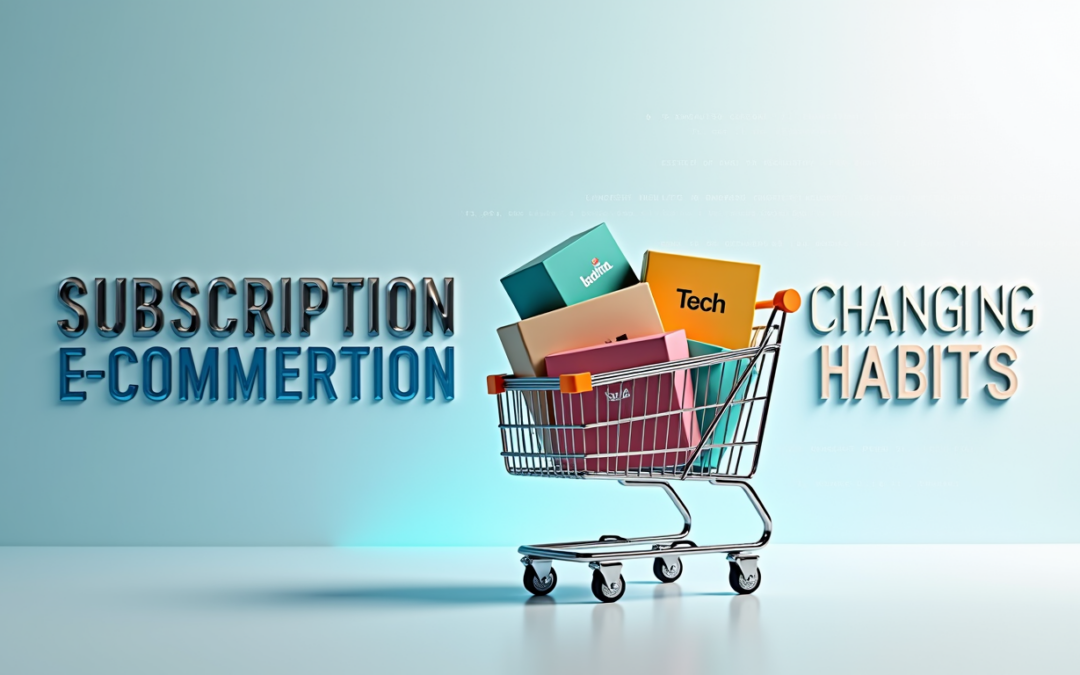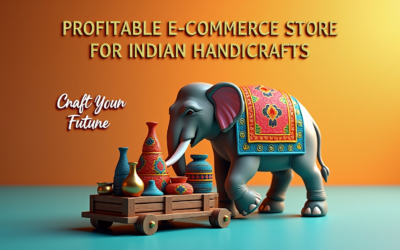How Subscription-Based E-Commerce Models Are Changing Consumer Buying Habits
In recent years, subscription-based e-commerce has taken the world by storm. What started with services like Netflix and Amazon Prime has now expanded to a wide variety of sectors, from food and beauty products to fitness and education. Consumers are shifting from traditional one-time purchases to more flexible, recurring subscriptions that offer greater convenience, personalization, and even cost savings.
For Indian entrepreneurs, understanding the shift towards subscription-based models is crucial. As digital payment ecosystems in India evolve, making transactions smoother and safer, businesses must adapt to meet the growing demand for easy and hassle-free online shopping experiences. In this blog, we’ll dive into how subscription-based e-commerce models are reshaping consumer buying behavior, the key benefits for businesses, and how entrepreneurs can leverage India’s growing digital payment options.
What is Subscription-Based E-Commerce?
At its core, a subscription-based e-commerce model is one where customers pay a recurring fee, typically on a monthly or annual basis, to receive products or services on a regular schedule. This can include anything from beauty boxes (like FabFitFun), curated snack boxes, and meal kits, to more significant services like streaming platforms or fitness memberships.
India, with its large and diverse population, is seeing an uptick in such business models. With increasing internet penetration and an evolving digital payment ecosystem, more consumers are embracing subscriptions for a variety of reasons, including convenience, personalization, and affordability.

1. Convenience is Key: A Game-Changer for Consumers
One of the biggest appeals of subscription-based e-commerce is the convenience it offers to consumers. Instead of having to search for products or services every time they need them, customers can set up a subscription that automatically delivers items to their doorsteps on a regular schedule.
For example, services like Milk Basket deliver fresh milk and grocery items daily, while platforms like UrbanClap offer subscription-based home service packages. This is particularly appealing in India, where busy urban lifestyles are becoming the norm. Subscription models allow consumers to manage their needs with minimal effort.
In terms of payment, the flexibility offered by India’s e-commerce payment options is a big plus. Thanks to solutions like UPI payments India, QR code payments, and digital wallets India, consumers can easily sign up for subscriptions and pay for them without hassle. Payment methods such as COD payments India (Cash on Delivery) are also popular in India, especially for new customers who might hesitate to share payment details upfront. The ease of these payment methods has helped accelerate the adoption of subscription-based services.
2.Personalization: Tailored Experiences for Every Customer
Another powerful feature of subscription e-commerce is personalization. Businesses can gather data on customers’ preferences, purchase history, and browsing patterns to tailor the products or services they offer. This level of personalization ensures that customers receive exactly what they want, when they need it.
For example, Blys, a subscription service offering home beauty and wellness services, personalizes its offerings based on the customer’s preferences, including their skin type, beauty regime, and wellness goals. Similarly, platforms like Cure.fit create personalized fitness plans for subscribers, making it easier for customers to stick with their health goals.
Payment services play a huge role in this process. With India’s payment apps and mobile wallets, businesses can create recurring billing cycles for their subscribers. Solutions like credit or debit cards and mobile payments allow customers to enjoy seamless payments without the need to manually renew subscriptions each month. This seamless payment flow contributes to a positive customer experience, helping businesses maintain higher subscription retention rates.

3. Cost-Effective for Consumers and Businesses
From a financial perspective, subscription-based models offer both businesses and customers significant benefits. For customers, subscribing to a service often comes with a discount or cost-saving over making individual purchases. For example, subscribing to a meal kit service might cost less than buying groceries for each meal individually. Similarly, fitness apps often provide discounted rates for subscribers who commit for a year.
For businesses, subscription-based e-commerce models help create predictable, recurring revenue streams. This stability allows companies to plan better and invest in growth without worrying about cash flow issues.
Additionally, businesses benefit from reduced transaction fees when using digital payment methods for subscription services. Whether it’s through UPI payments India, QR code payments, or digital wallets, businesses often pay lower transaction fees for recurring payments compared to one-time purchases. This is a key advantage, especially for small and medium-sized enterprises (SMEs) looking to grow their customer base and optimize payment processing costs.
4. The Role of “Buy Now Pay Later” in Subscription E-Commerce
In India, Buy Now Pay Later India (BNPL) services are increasingly becoming popular, especially among younger consumers. This payment method allows customers to pay for their subscription in instalments, providing more flexibility. Platforms like Simpl, LazyPay, and ZestMoney offer BNPL solutions, enabling consumers to break down payments into smaller, manageable amounts.
For businesses, offering BNPL options can significantly boost conversions, as it lowers the financial barrier to entry for potential customers. Many consumers may hesitate to pay for a full year of subscription upfront, but BNPL options give them the flexibility to commit with smaller payments.
As BNPL services grow in India, they are becoming an integral part of the digital payment ecosystem in India. The adoption of online payment methods for BNPL services, coupled with the security of payment processors, ensures that customers’ financial transactions are secure.
5. Ensuring Payment Security in Subscription Models
With all the personal and financial data exchanged in subscription transactions, businesses must ensure they provide secure payment solutions to customers. Subscription businesses are prime targets for cybercriminals, so protecting sensitive information is crucial for long-term success.
Payment gateway security in India has significantly improved in recent years, with businesses now required to comply with PCI DSS compliance standards to safeguard customer data. In India, regulatory bodies such as the Reserve Bank of India (RBI) are also enforcing rules to ensure online transactions remain secure.
Customers are now more aware of the risks associated with online transactions, so providing a secure payment solution is not just important—it’s a necessity. Offering secure and trustworthy payment options, such as digital wallets India, credit card payments, and mobile phones, can make customers feel more confident when subscribing to a service.

6. The Future of Subscription-Based E-Commerce in India
The growth of subscription-based e-commerce models in India shows no signs of slowing down. With increasing internet penetration, smartphone usage, and digital payment adoption, businesses in India are well-positioned to leverage this model to their advantage.
Subscription models are not just limited to physical products; they are expanding into services, such as online learning platforms, entertainment subscriptions, and more. For example, platforms like Byju’s and Unacademy are rapidly growing their subscriber base by offering courses that customers can access regularly for a fixed fee.
In the future, mobile devices and payment apps will continue to be the primary tools for managing subscriptions. The convenience of managing subscriptions directly from mobile phones will likely drive even more customers to sign up for services across various sectors. As these models evolve, businesses that provide seamless checkout processes and diverse e-commerce payment options will have an edge in attracting customers.
Conclusion: How Can Indian Entrepreneurs Leverage Subscription Models?
Subscription-based e-commerce models are reshaping the way Indian consumers shop, offering them greater convenience, personalization, and flexibility. With payment solutions like digital wallets, QR code payments, and UPI payments India, businesses can make the subscription experience smooth and secure.
As a business owner in India, adopting a subscription-based model can help you build a loyal customer base, create predictable revenue streams, and reduce the risk of fluctuating sales. With the right payment gateway security, businesses can offer a seamless and safe experience for consumers while capitalizing on the growing demand for convenience.
In 2024 and beyond, subscription-based e-commerce will continue to thrive, driven by India’s evolving digital payment ecosystem and the increasing preference for flexible payment options like Buy Now Pay Later. By embracing these trends, businesses can stay ahead of the curve and deliver what consumers want in a fast-changing retail landscape.














